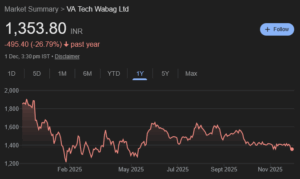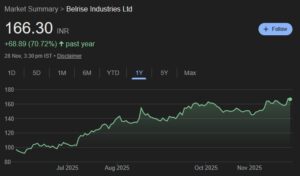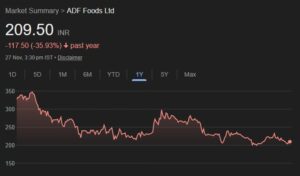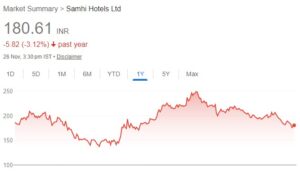
(i) How to identify new stock ideas:
When Nikunj Dalmia asked Mohnish how he generates new stock ideas and whether his checklist was useful for that, Mohnish candidly said:
“I have no original ideas. Almost everything in our portfolio is cloned from some other investor that I admire”. “The wonderful part of the business is that I still get paid” Mohnish added, much to the merriment of the distinguished audience.
Mohnish also said that the checklist only helped him to vet that his investment satisfied all the norms.
“If you can identify great investors in India and look at their portfolios and the ideas in which they have the greatest conviction, then those stocks and portfolios will tend to do well” Mohnish advised.
(ii) Stay within your circle of competence:
Most things are outside our circle of competence. There are only a few things that we understand properly. Invest only in things that you understand fully, Mohnish said.
(iii) Write a paragraph which explains the thesis of why you are buying the stock:
Mohnish pointed out that when he identifies a stock idea and runs it through the checklist and does the analysis, he writes a paragraph of a few lines on why he bought the stock. In that, he also lays down what the intrinsic value of the business is, the target price of the stock and the expected period of holding.
This paragraph of investment thesis is reviewed periodically (every 3 or 6 months) and updated as to the intrinsic value of the stock and how it compares with the market price.
Mohnish also pointed out that if you buy something that is within your circle of competence, you would (or should) know its intrinsic worth.
(iv) But stocks which have high uncertainty but low risk:
Mohnish gave the example of Satyam Computers which he invested in 1995. The stock was quoting at a value which was lower than its book value. Also, it was growing at a rapid pace. So, there was no risk though there was uncertainty on whether the company would be able to grow at the same pace. That stock became a 100x multi-bagger in a few years.
(v) Don’t buy the stock if the intrinsic value is not worth at least twice what the stock is quoting:
Mohnish pointed out that he is not interested in buying a stock where the current price is not at least half the intrinsic value. This gives the much required ‘margin of safety’.
(vi) “Don’t shoot yourself in the foot by being impatient”:
“Investors shoot themselves in the foot not by what they buy but by their inability to be patient” Mohnish said. He explained that business changes and growth takes place on a time scale that is very different from the flashing of the ticker.
Mohnish also pointed out that he himself does not touch the stocks that he has bought for a year or two or even longer.
(vii) P/E and Book Value are relevant but not adequate – have a view point on the business:
Mohnish advised investors not to be guided solely by P/E or P/BV but to have a view point on where the business is going to be in five or seven years. He gave the example of Apple Inc which released the IPhone in 2007. Neither the P/E nor the P/BV would have told you that the business would turn out so well. A lot of the factors that go into the making of an investment decision are non-quantitative, he added.
“It should be painfully obvious that the business makes sense to invest in” Mohnish emphasized. You must ensure that “the downside is protected and the upside is decent” he added.
(viii) Concentrated Portfolio:
Mohnish disclosed that the Pabrai Funds has a concentrated portfolio. The top two stocks constitute 40% of the value. The top three accounts for nearly 55% and the top six stocks accounts for nearly 70 to 80% of the value of the portfolio.
(ix) Even if you compound your wealth at only 15%, you would have a significant amount:
Mohnish reminded the audience about the magic of compounding. “The compounding engine gathers steam in the later part” he said and pointed out that even if one could compound his wealth at the modest rate of 15%, his wealth would grow to a significant amount in the later years.
(x) You don’t need to have a point of view on everything:
In reply to a question as to whether Facebook, Twitter, Google or Alibaba are “overvalued”, Mohnish said that these stocks are outside his circle of competence and that he does not have a view on them.
“Once it is not in my portfolio, it doesn’t matter whether I think they are overvalued or not or what point of view is. I do, however, have a point of view on the three or four stocks that are in my portfolio” Mohnish said.
(xi) Indian stocks are about 12 – 13% of the Pabrai’s Funds’ assets:
Mohnish disclosed that the investments made by him in Indian stocks, namely J&K Bank, South Indian Bank and GIC Housing, are about 12 to 13% of the total assets.
(xii) Commodity stocks:
Mohnish explained that though Warren Buffett avoids investing in commodity stocks as they are cyclical and without predictable cash flows, such stocks could form a good investment. The key to investing in commodity stocks is that the company must be one of the lowest cost producers, he added.






From where do I get to know which professional value investor bought which stock and at what valuation.
for eg I want to clone prof bakshi’s investment but I found relaxo at 5 times from its normal range. Plz suggest if any way is there.